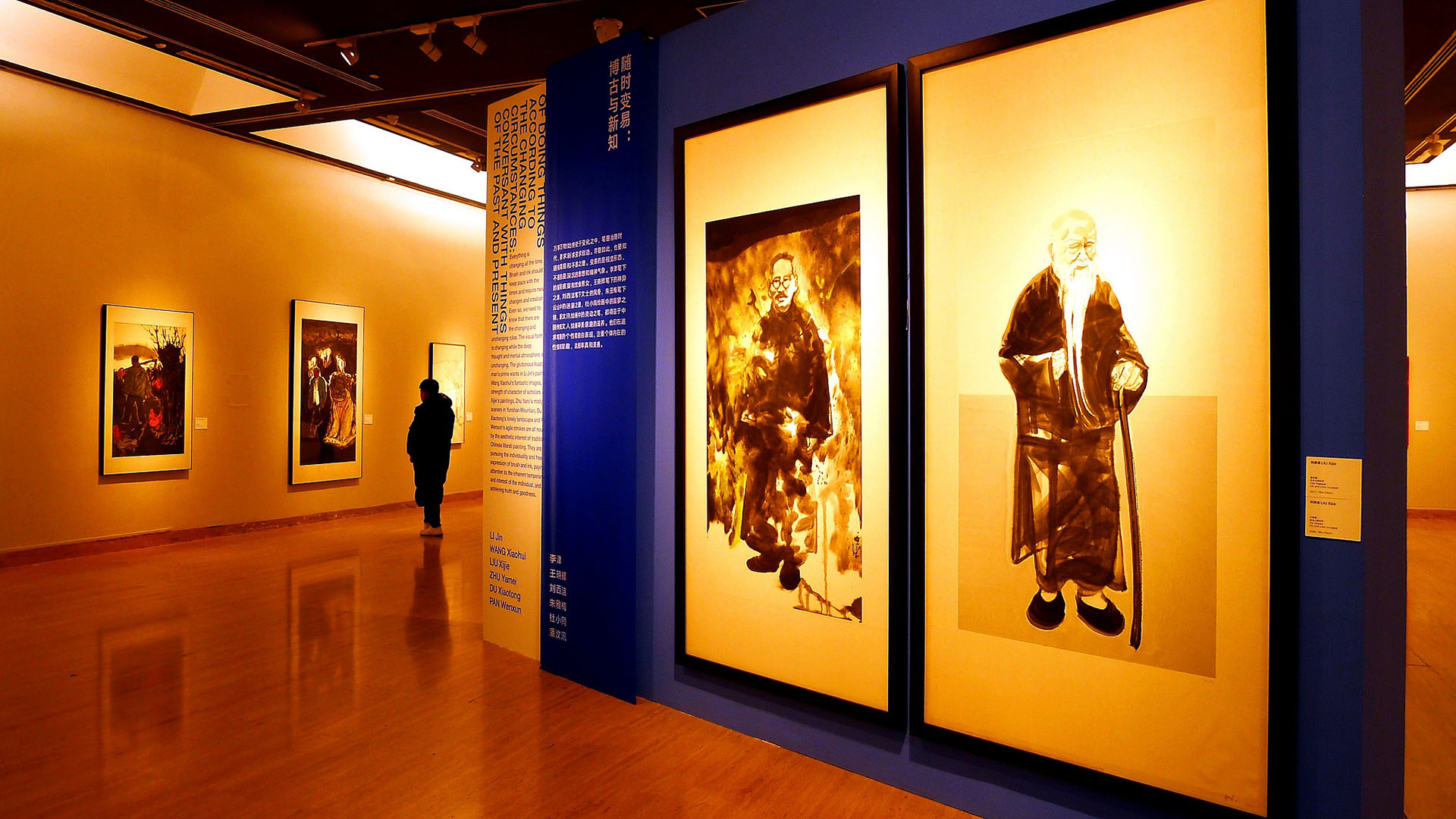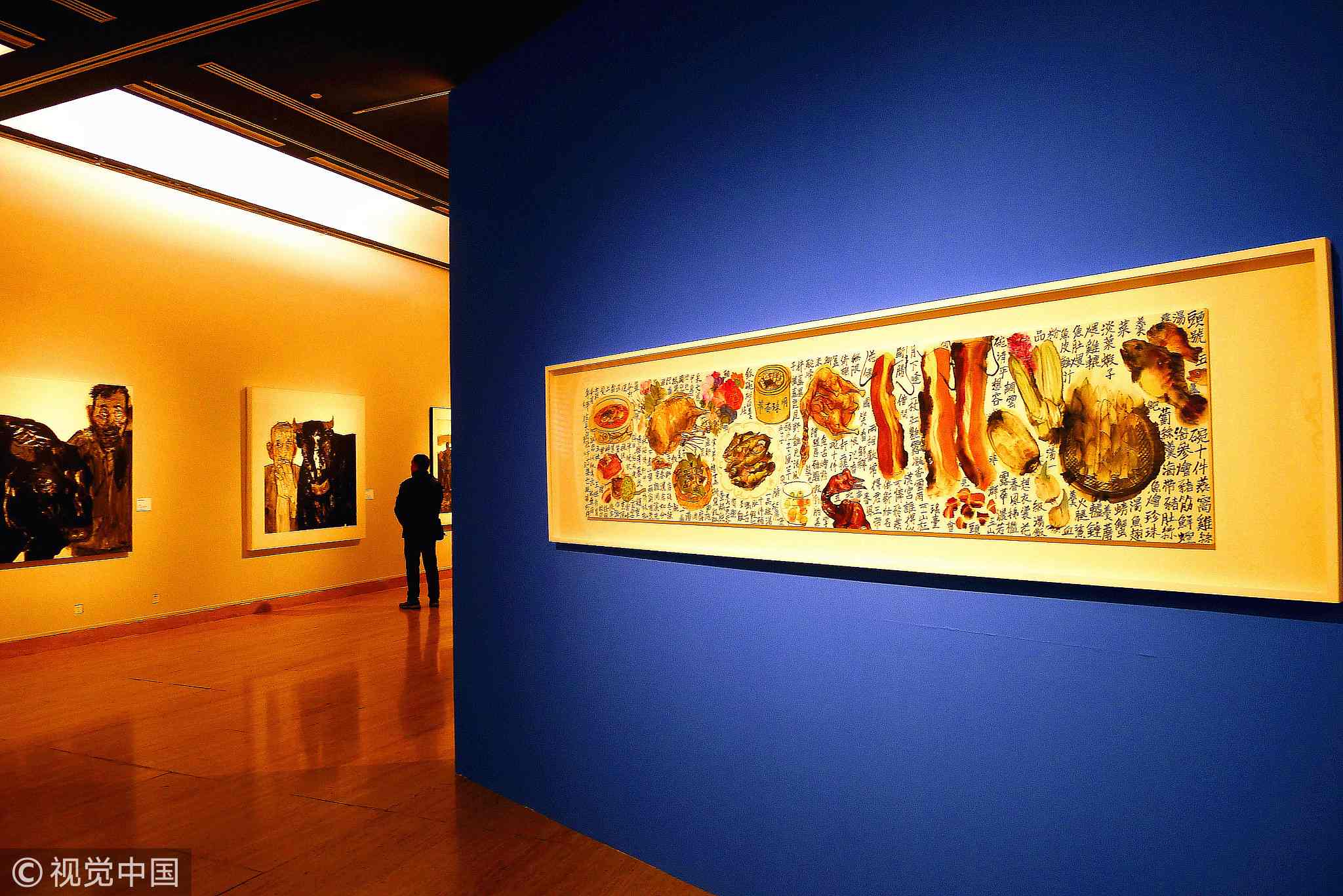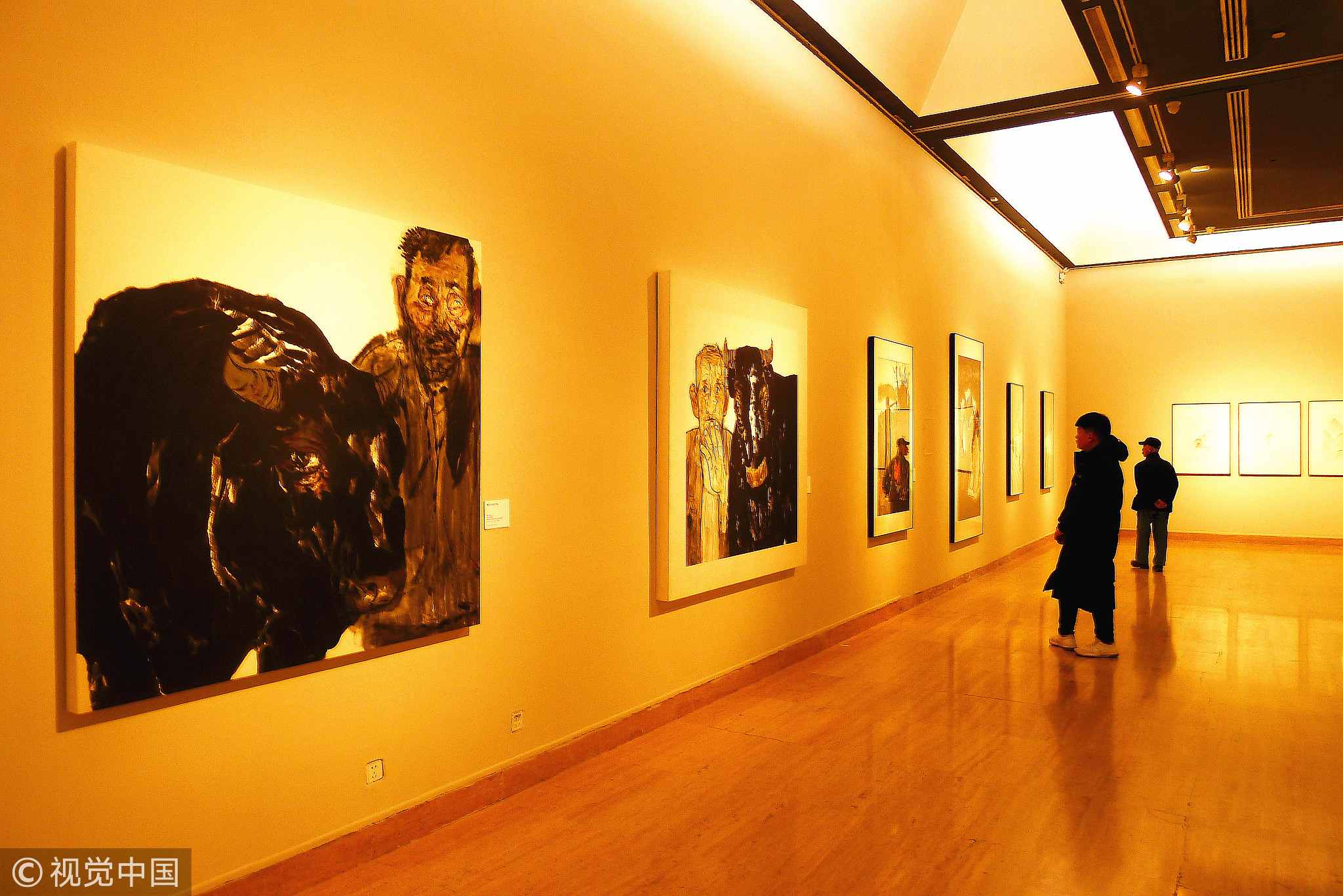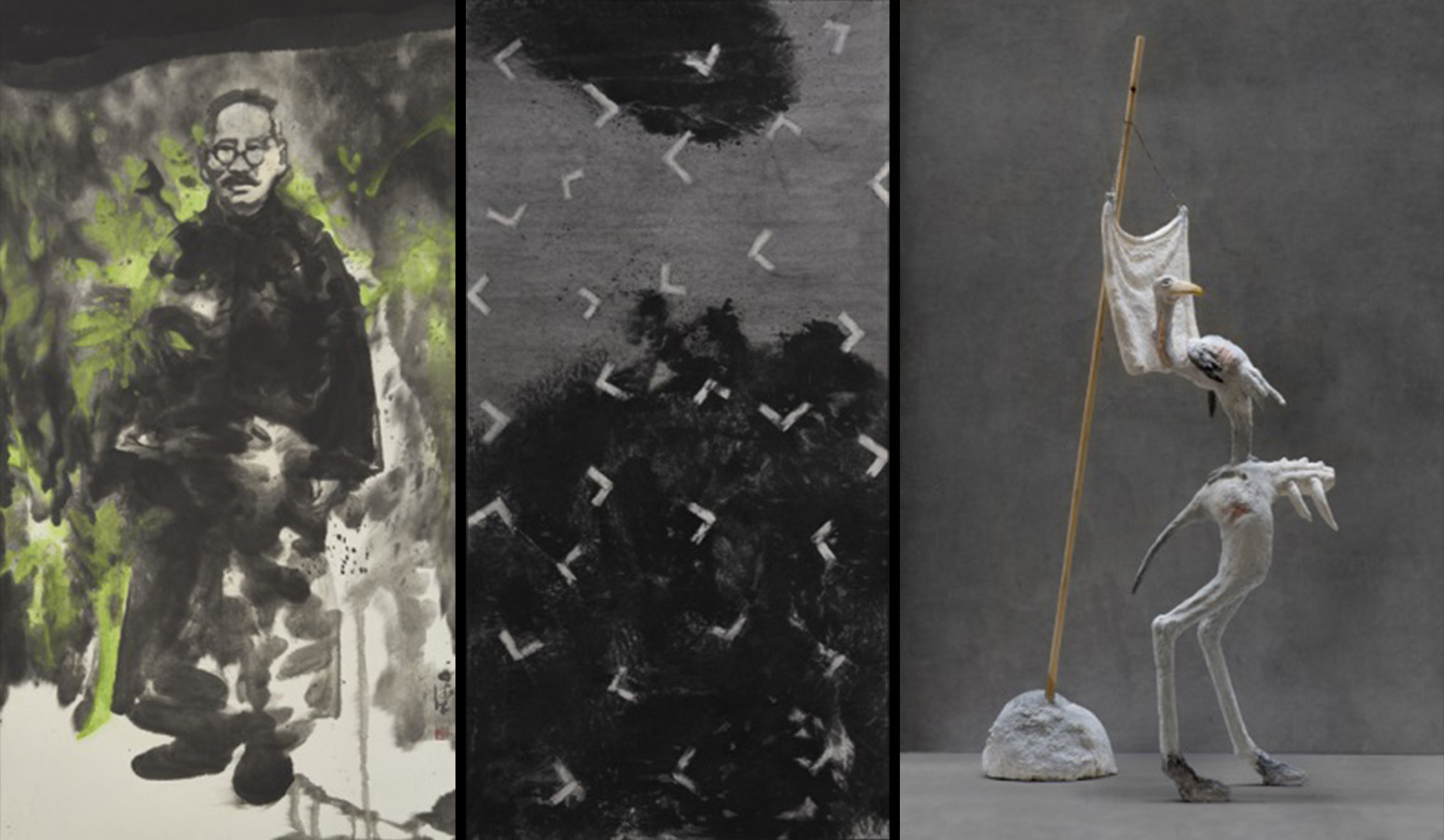
Arts
20:28, 03-Jan-2019
Ink art towards the future: Exhibition of contemporary Chinese ink art held in Beijing
Updated
19:28, 06-Jan-2019
Sun Wei, Li Qiong
02:23

Ink painting has always been associated with Chinese traditional art. However, an exhibition exploring the possibilities and future of ink art challenged these notions.
Held at the National Art Museum of China in Beijing, it brought together works by 35 Chinese artists, presenting the traditional art medium with an eye for the future.

A view of the exhibition "Recon-Firm: The Future-oriented Ink Art," in the National Art Museum of China in Beijing, December 20, 2018. /VCG Photo
A view of the exhibition "Recon-Firm: The Future-oriented Ink Art," in the National Art Museum of China in Beijing, December 20, 2018. /VCG Photo
Entitled "Recon-Firm: The Future-oriented Ink Art," the exhibition was divided into six parts, aimed at sorting out the latest achievements in the development of Chinese ink art.
It presented new creations of over 20 representative artists who participated in the modern ink painting movement in the 1980s, through the experimental ink painting movement in the 1990s. It also featured works of more than 10 artists involved in the artistic creation of new fine brushwork and new ink painting schools in recent years.

Visitors look at art pieces at the exhibition "Recon-Firm: The Future-oriented Ink Art," in the National Art Museum of China in Beijing, December 20, 2018. /VCG Photo
Visitors look at art pieces at the exhibition "Recon-Firm: The Future-oriented Ink Art," in the National Art Museum of China in Beijing, December 20, 2018. /VCG Photo
Curator of the exhibition Wei Xiangqi said the new expressions should give a boost of confidence to this traditional art form.
"Ink painting is a representative traditional art form of China. Since the 1980s, our artists have been exploring new channels for its development. They hope that through new expressions, we could construct a fresh ideological and spiritual form of China's contemporary art. Thus, we could have a cultural dialogue with the West in a more equal way."
The show examined the evolving forms of ink, as this traditional medium of classic art was presented in an experimental way. It was not only used for painting and writing but also an element in video art, new media works, and installations.

A combined photo of three artworks, (L-R)"Cai Yuanpei" by artist Liu Xijie, "Directions" by artist Du Songru, "A landmark in remote" by artist Zeng Jianyong./Photo Courtesy of the National Art Museum of China, graphic design by Li Jingjie
A combined photo of three artworks, (L-R)"Cai Yuanpei" by artist Liu Xijie, "Directions" by artist Du Songru, "A landmark in remote" by artist Zeng Jianyong./Photo Courtesy of the National Art Museum of China, graphic design by Li Jingjie
Wei Xiangqi added that the display sought to usher ink art into a globalized context. "Since the 19th century, we have developed a tendency to regard China as the 'Self', and the West as the 'Other'. So in our culture, we used to stick to our own thoughts, while borrowing Western techniques."
"In this way, many of the Chinese artists separate shapes from the spirit. In my opinion, today our art should not be divided into the internal part and the external, and we should not refuse a total union of cultures."
The exhibition concluded on Wednesday after a two-week run.

SITEMAP
Copyright © 2018 CGTN. Beijing ICP prepared NO.16065310-3
Copyright © 2018 CGTN. Beijing ICP prepared NO.16065310-3